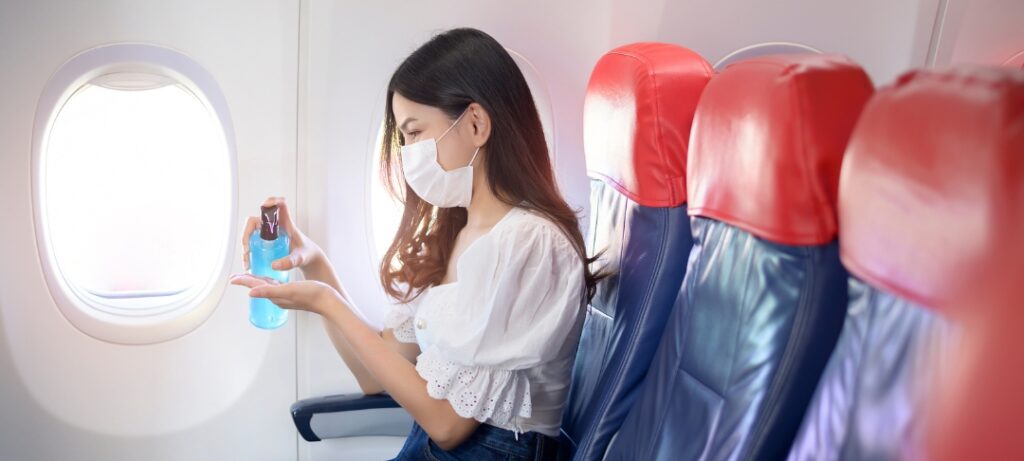Hand sanitizer has become a must-have item in many people’s daily routines, especially in the wake of the COVID-19 pandemic. However, when it comes to traveling by plane, many people are unsure of the regulations and policies surrounding the transportation of hand sanitizer. Can you bring hand sanitizer on a plane? And if so, how much can you bring and in what form? In this article, we will outline the TSA regulations for hand sanitizer and the policies of major airlines. We will also provide best practices for traveling with hand sanitizer, including labeling and storing the product, and alternatives to traditional hand sanitizer. Whether you’re a frequent flyer or a first-time traveler, this article will help you navigate the rules and regulations surrounding hand sanitizer on airplanes.
TSA Regulations for Hand Sanitizer
The Transportation Security Administration (TSA) is responsible for ensuring the safety of passengers on airplanes. As part of this mission, the TSA has specific regulations regarding the transportation of hand sanitizer.
Quantity Limits
The TSA allows passengers to bring a quart-sized bag of liquids, aerosols, gels, creams, and pastes in their carry-on bags and checked bags. These items must be placed in a clear, quart-sized bag and placed in a separate bin or on top of your carry-on bag for inspection. The TSA allows each passenger to bring a maximum of 12 ounces of hand sanitizer in their carry-on bag, or in their checked bag if they are traveling to or from certain countries.
Packaging Requirements
Hand sanitizer should be placed in its original packaging. If the original packaging is no longer present, the hand sanitizer should be placed in a clear plastic bag or container. The hand sanitizer should be labeled with the name of the product, the ingredients, and the manufacturer’s information. The TSA may ask to test a small quantity of hand sanitizer to ensure that it is not a prohibited item.
It is important to note that the TSA reserves the right to prohibit any item that it deems a security risk. If you’re not sure whether an item is allowed, it’s best to leave it at home or check with the TSA before you fly.
Airlines’ Policies on Hand Sanitizer
In addition to TSA regulations, individual airlines may also have their own policies regarding the transportation of hand sanitizer. It’s important to check with your airline before your flight to ensure that you are in compliance with their rules.
Carry-on Allowances
Most airlines will allow passengers to bring hand sanitizer in their carry-on bags, as long as it adheres to the TSA’s regulations on quantity (a maximum of 12 ounces per passenger). Some airlines may have additional restrictions on the type of hand sanitizer that can be brought on board, such as requiring it to be in a gel or liquid form.
Checked Baggage Restrictions
Some airlines may have restrictions on the amount of hand sanitizer that can be placed in checked baggage. It is best to check with your airline for their specific guidelines on the quantity of hand sanitizer that can be placed in checked baggage.
It is important to check with your airline for their most up-to-date policies as they may change over time due to the current situation. Also, it is always a good idea to have a spare hand sanitizer with you when traveling, just in case you need it.
Best Practices for Traveling with Hand Sanitizer
To ensure that your travel experience is as smooth as possible, it’s important to follow best practices for traveling with hand sanitizer.
Labeling and Declaring at Security
Make sure that your hand sanitizer is clearly labeled and easily identifiable. If you are traveling with multiple containers of hand sanitizer, consider placing them in a clear plastic bag to make them easy to identify. When passing through security, declare any hand sanitizer you have with you to the TSA officer.
Storing in Your Carry-on or Checked Baggage
Store your hand sanitizer in a place that is easily accessible, such as your carry-on bag, purse or pocket. Make sure that it is stored in a leak-proof container and is secure so it won’t spill. If you are traveling with multiple containers of hand sanitizer, consider placing them in a clear plastic bag to make them easy to identify.
Alternatives to Traditional Hand Sanitizer
Consider bringing alternative forms of hand sanitizer, such as hand sanitizer wipes, or alcohol-based sanitizing sprays, as these can be more convenient for travel. Be sure to check the TSA’s regulations on liquids, aerosols, gels, creams, and pastes before you travel.
In summary, it is important to be informed about the TSA regulations, and your airline policies and to follow best practices for traveling with hand sanitizer to ensure a smooth travel experience. It is also a good idea to have extra hand sanitizer with you during travel just in case and to keep some spare in your carry-on bag.
Conclusion
In conclusion, hand sanitizer is an essential item for many travelers, especially during the ongoing COVID-19 pandemic. However, it’s important to be aware of the regulations and policies surrounding the transportation of hand sanitizer on airplanes. The TSA has specific rules on the quantity and packaging of hand sanitizer, and individual airlines may also have their own policies. By following the best practices for traveling with hand sanitizer, such as clearly labeling and declaring the product, and storing it in a secure and accessible location, you can ensure that your travel experience is as smooth as possible. Additionally, consider alternative forms of hand sanitizer, such as wipes or sprays, as they can be more convenient for travel. By being informed and prepared, you can travel with peace of mind and stay safe on your journey.
